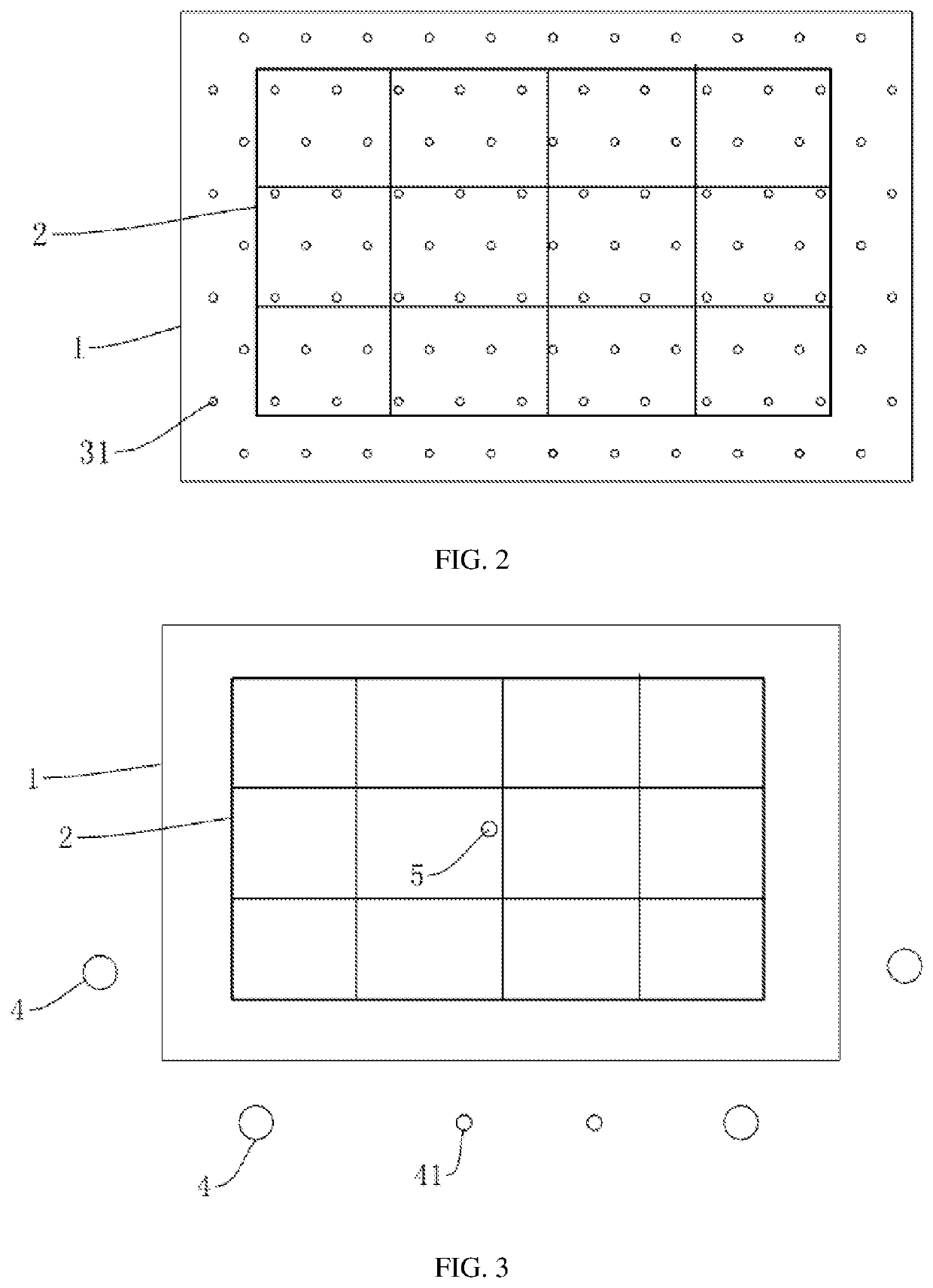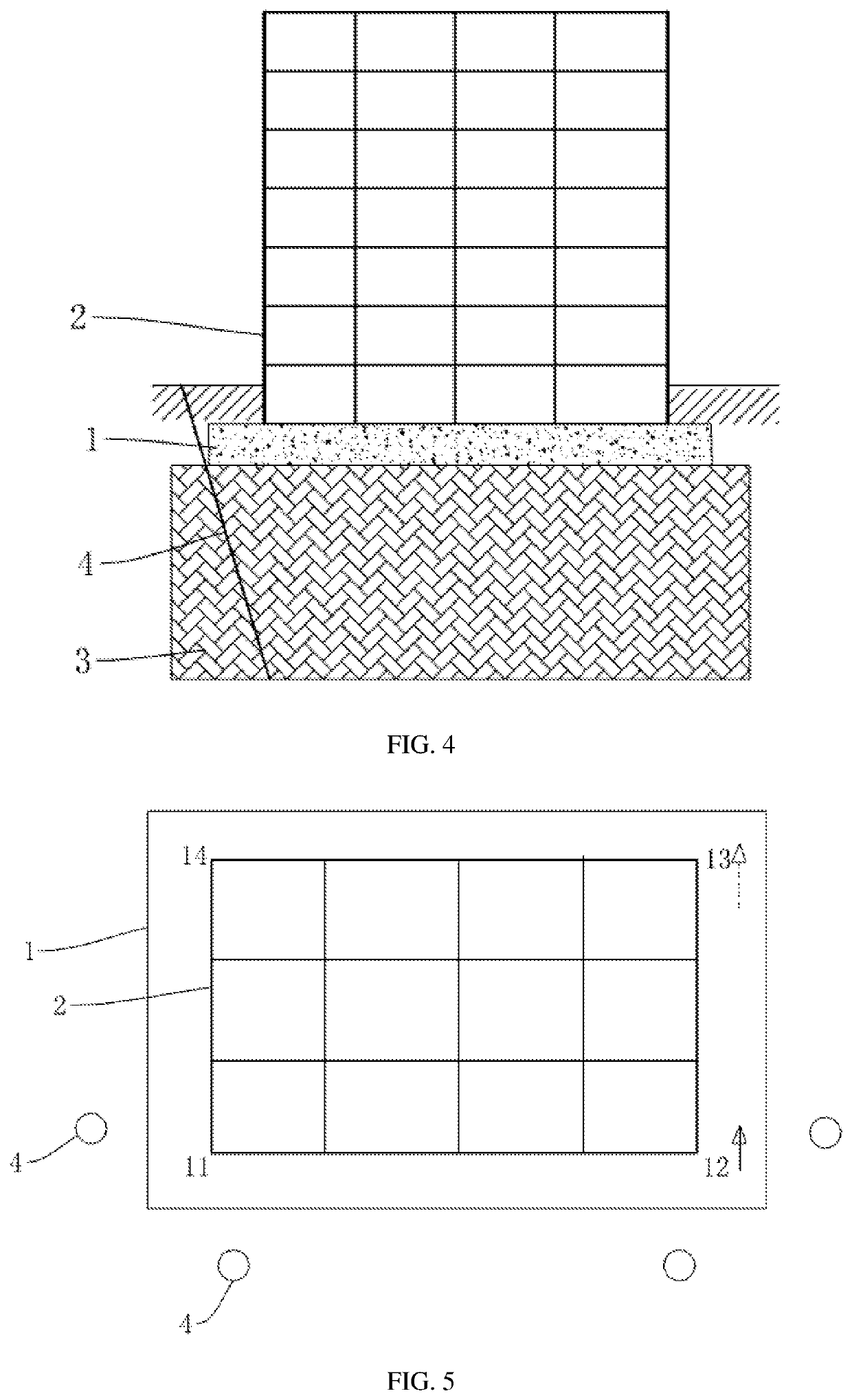Method for strengthening and lifting high-rise building having raft foundation
a technology for building foundations and high-rise buildings, applied in foundation engineering, soil preservation, construction, etc., can solve problems such as uneven settlement, building sinkage, and threat to the structural safety of buildings, and achieve the effects of low damage to buildings, good overall stability, and controllable lifting speed and heigh
- Summary
- Abstract
- Description
- Claims
- Application Information
AI Technical Summary
Benefits of technology
Problems solved by technology
Method used
Image
Examples
embodiment 2
[0090]When the foundation of the building is a special stratum such as collapsible loess and miscellaneous fill, the hole drilling and grouting operation adopts the integrally advancing grouting process, but not the integrally retreating grouting. Because the drill rod needs to be drilled to the design depth at one time in the integrally retreating grouting construction, in the procedure of drilling into the design depth, the water ejected from the drill bit part will soften the surrounding soil body, resulting in the secondary settlement of the building. When the collapsible loess is drilled, although the drilling speed is high and there is not much water flowing out at the drill bit, the collapsible loess will sink once in the water. So it is impossible to use the scheme of one-time drilling into the design depth. When drilling into the miscellaneous fill soil layer, it often encounters backfilled schist and so on. When drilling into the schist, the drilling speed slows down and ...
embodiment 3
[0103]In embodiment 1, the lifting hole 4 is provided on the outer side of the raft foundation 1, avoiding the hole drilling of the raft foundation 1, protecting the raft foundation 1 from damage, and drilling without the need to adopt special tools such as water drill, thereby improving the working efficiency. However, sometimes there is insufficient operating space at the periphery of the building, and in this case, as shown in FIG. 20, lifting hole 4 needs to be provided inside the building. On the side to be lifted of the building, the vertical lifting hole 4 is arranged tightly contacting with the load bearing wall 2, the vertical lifting hole 4 penetrates the raft foundation 1, and the bottom of the hole extends to a position close to the bottom of the reinforcement 3.
[0104]A rebar protective layer on the surface of the raft foundation 1 is broken at the lifting hole 4 to expose the raft rebar. A water drill is used to drill downward between the rebar gaps of the raft foundati...
embodiment 4
[0108]With reference to FIG. 21, in practical buildings, it is sometimes encountered that two unit buildings are close to each other, and only about 10 cm of settlement joint is left in front of adjacent units. At this time, it is obviously inappropriate to arrange a lifting hole 4 on the immediately adjacent side of the building. Furthermore, since one lifting hole 4 is insufficient to uniformly lift the building upwards, so two lifting holes 4 are arranged at this moment. One lifting hole 4 provided as above by being provided inclinedly on the outer side of the building. The other lifting hole 4 is provided vertically at the inner side of the building close to the wall body of the building. The two lifting holes 4 are respectively provided on different sides of a corner of the building. When lifting is performed, grouting lifting is performed at the same time.
[0109]In the reinforcement grouting and lifting grouting mentioned in the above embodiments, as well as the filling groutin...
PUM
 Login to View More
Login to View More Abstract
Description
Claims
Application Information
 Login to View More
Login to View More - R&D
- Intellectual Property
- Life Sciences
- Materials
- Tech Scout
- Unparalleled Data Quality
- Higher Quality Content
- 60% Fewer Hallucinations
Browse by: Latest US Patents, China's latest patents, Technical Efficacy Thesaurus, Application Domain, Technology Topic, Popular Technical Reports.
© 2025 PatSnap. All rights reserved.Legal|Privacy policy|Modern Slavery Act Transparency Statement|Sitemap|About US| Contact US: help@patsnap.com



